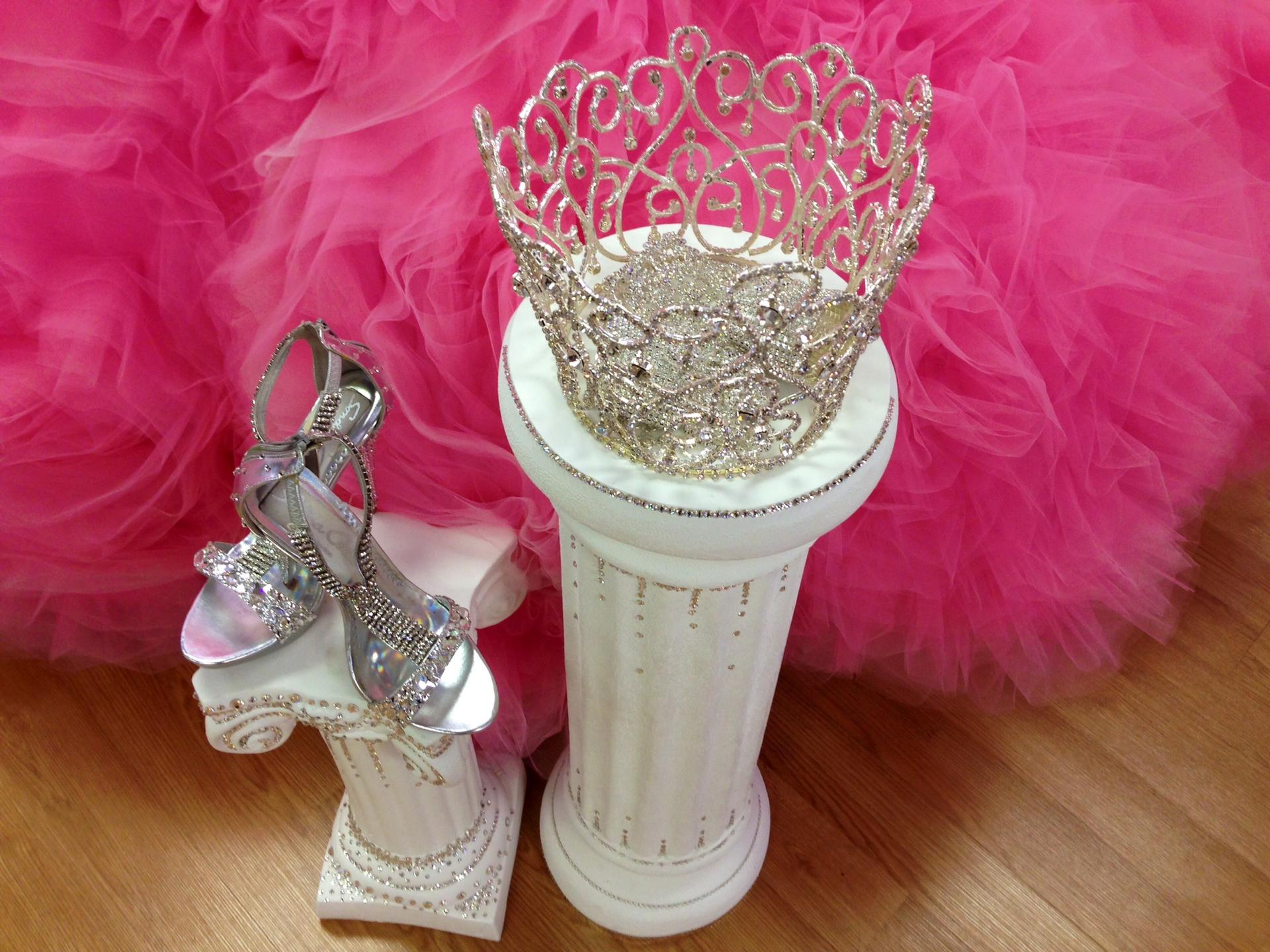What does it mean to be American Romani or Gypsy?
Sondra Celli’s Design Studio in Waltham, Massachusetts.
Reality shows like "My Big Fat American Gypsy Wedding" and 'Gypsy Brides US' are all about the bling and the brawls.
And Sondra Celli is the woman behind that bling.
From her design studio in Waltham, Massachusetts, Celli creates wedding dresses for Gypsy brides.
"I know what the Gypsies want. I've been working with them for years," she says. "I started with them over 34-years-ago and it just grew. Because the dresses I made at the beginning blew their minds and it just got bigger and bigger and bigger."
But the story of the Gypsy – or Roma people – began long before reality TV.
The Romani culture began in Northwest India about 1,000 years ago.
Historians say that the Roma traveled through Afghanistan to Turkey, Greece and eventually to all points of Europe.
Like any group wandering throughout Europe during the Middle Ages, they were seen as a threat because of their dark skin and nomadic life.
They were often persecuted for speaking their language and forced to assimilate into local culture.
In the 1800s, many Roma people journeyed to the US and settled in the western and southern parts of the country.
According to Univeristy of Texas Professor Ian Hancock, that descrimination continued in America.
"Having a culture that excludes intimacy with outsiders, having a language that nobody recognizes, all of these things have combined to make the outside world very suspicious of Roma," Hancock says.
Cristiana Grigore, a Romanian of Roma ethnicty, who came to the US eight years ago as a Fulbright scholar, says that from an early age she decided she didn't want to be a gypsy.
"I grew up in a family that wanted to assimilate and strive to be part of mainstream society," she says. "I always knew about my Roma background but I hid it because I associated with it something very negative."
Grigore says that with all the negative stereotypes, shows like "My Big Fat American Gypsy Wedding" don't help.
“I know it is very disrespectful," she says. "It presents the Roma people in a light that we don't really like. I think it's not representative to the most of us.”
Reality shows like "My Big Fat American Gypsy Wedding" and 'Gypsy Brides US' are all about the bling and the brawls.
And Sondra Celli is the woman behind that bling.
From her design studio in Waltham, Massachusetts, Celli creates wedding dresses for Gypsy brides.
"I know what the Gypsies want. I've been working with them for years," she says. "I started with them over 34-years-ago and it just grew. Because the dresses I made at the beginning blew their minds and it just got bigger and bigger and bigger."
But the story of the Gypsy – or Roma people – began long before reality TV.
The Romani culture began in Northwest India about 1,000 years ago.
Historians say that the Roma traveled through Afghanistan to Turkey, Greece and eventually to all points of Europe.
Like any group wandering throughout Europe during the Middle Ages, they were seen as a threat because of their dark skin and nomadic life.
They were often persecuted for speaking their language and forced to assimilate into local culture.
In the 1800s, many Roma people journeyed to the US and settled in the western and southern parts of the country.
According to Univeristy of Texas Professor Ian Hancock, that descrimination continued in America.
"Having a culture that excludes intimacy with outsiders, having a language that nobody recognizes, all of these things have combined to make the outside world very suspicious of Roma," Hancock says.
Cristiana Grigore, a Romanian of Roma ethnicty, who came to the US eight years ago as a Fulbright scholar, says that from an early age she decided she didn't want to be a gypsy.
"I grew up in a family that wanted to assimilate and strive to be part of mainstream society," she says. "I always knew about my Roma background but I hid it because I associated with it something very negative."
Grigore says that with all the negative stereotypes, shows like "My Big Fat American Gypsy Wedding" don't help.
“I know it is very disrespectful," she says. "It presents the Roma people in a light that we don't really like. I think it's not representative to the most of us.”
We want to hear your feedback so we can keep improving our website, theworld.org. Please fill out this quick survey and let us know your thoughts (your answers will be anonymous). Thanks for your time!
